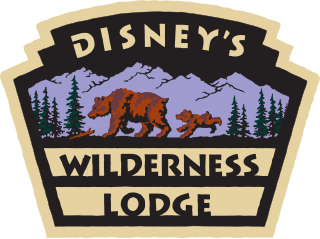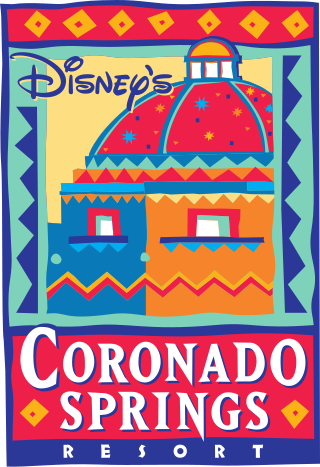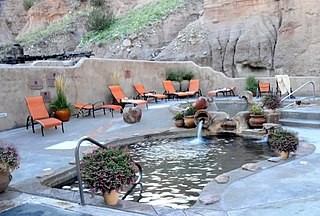
The geothermal areas of Yellowstone include several geyser basins in Yellowstone National Park as well as other geothermal features such as hot springs, mud pots, and fumaroles. The number of thermal features in Yellowstone is estimated at 10,000. A study that was completed in 2011 found that a total of 1,283 geysers have erupted in Yellowstone, 465 of which are active during an average year. These are distributed among nine geyser basins, with a few geysers found in smaller thermal areas throughout the Park. The number of geysers in each geyser basin are as follows: Upper Geyser Basin (410), Midway Geyser Basin (59), Lower Geyser Basin (283), Norris Geyser Basin (193), West Thumb Geyser Basin (84), Gibbon Geyser Basin (24), Lone Star Geyser Basin (21), Shoshone Geyser Basin (107), Heart Lake Geyser Basin (69), other areas (33). Although famous large geysers like Old Faithful are part of the total, most of Yellowstone's geysers are small, erupting to only a foot or two. The hydrothermal system that supplies the geysers with hot water sits within an ancient active caldera. Many of the thermal features in Yellowstone build up sinter, geyserite, or travertine deposits around and within them.

Mammoth Hot Springs is a large complex of hot springs on a hill of travertine in Yellowstone National Park adjacent to Fort Yellowstone and the Mammoth Hot Springs Historic District. It was created over thousands of years as hot water from the spring cooled and deposited calcium carbonate. Because of the huge amount of geothermal vents, travertine flourishes. Although these springs lie outside the caldera boundary, their energy has been attributed to the same magmatic system that fuels other Yellowstone geothermal areas.

Disney's Wilderness Lodge is a resort hotel located at the Walt Disney World Resort in Lake Buena Vista, Florida. Opened on May 28, 1994, the resort is owned and operated by Disney Parks, Experiences, and Products. Disney's Wilderness Lodge is located in the Magic Kingdom Resort Area on Bay Lake. The resort is located near Disney's Fort Wilderness Resort & Campground. A similarly themed resort, Disney's Grand Californian Hotel & Spa, is located at the Disneyland Resort in California.

Fairmont Hot Springs is an unincorporated resort community located in south-eastern British Columbia, Canada commonly referred to as Fairmont. The community had a reported population of 781 in the 2021 census, but the town receives frequent tourists. The local resort is centered around a soak pool and swimming pool fed by natural mineral hot springs. The original springs building, surrounded by hot spring water seeping out of the ground, still stands.

Disney's Coronado Springs Resort is a resort hotel at the Walt Disney World Resort that opened on August 1, 1997. The resort is located in the Animal Kingdom Resort Area. Its theme is American colonial Spanish and southwestern American. This hotel is categorized as a 'moderate' resort. This was Walt Disney World's first attempt at a 'moderate' resort with a convention center. It is the only moderate level Disney resort with suites, a cafeteria-style restaurant, a formal dinner restaurant, a gift shop, an arcade, one large pool, three quiet pools, a salon, fitness center, and a dance club. The resort is owned and operated by Disney Parks, Experiences and Products.
Minnehaha Springs is an unincorporated community located in Pocahontas County, West Virginia, United States. It was named for the fictional Native American "princess," Minnehaha, and the mineral springs on the Lockridge farm. It is the only community with this name in the United States. On the site of what is now Camp Twin Creeks warm mineral springs can still be found.

Peppermill Reno is a hotel and casino located in Reno, Nevada owned and operated by Peppermill Casinos, Inc.

The Omni Homestead Resort is a luxury resort in Hot Springs, Virginia, United States, in the middle of the Allegheny Mountains. The area has the largest hot springs in the commonwealth, and the resort is also known for its championship golf courses, which have hosted several national tournaments. The resort also includes an alpine ski resort; founded in 1959, it is the oldest in Virginia. The resort has been designated a National Historic Landmark; it has a history extending more than two and a half centuries. The Omni Homestead Resort is a member of Historic Hotels of America the official program of the National Trust for Historic Preservation.

Hot Lake Hotel is a historic Colonial Revival hotel originally built in 1864 in Hot Lake, Union County, Oregon, United States. The hotel received its namesake from the thermal spring on the property, and operated as a luxury resort and sanitorium during the turn of the century, advertising the medicinal attributes of the mineral water and drawing visitors worldwide. It is also the first known commercial building in the world to utilize geothermal energy as its primary heat source.

Wilbur Hot Springs, formerly known as Simmons Hot Springs, is a naturally occurring historic hot spring approximately 22 miles west of Williams, Colusa County, in northern California. It is about 2 hours by car northeast of the San Francisco Bay Area. It was developed as a spa in the 19th century, and since its acquisition in the 1970s by therapist Richard Louis Miller, has been operated as a spa resort and personal retreat. The adjacent valley was added to the property as a nature reserve protected by covenant.

Howard Springs is a set of springs turned into a resort in the 1870s in Lake County, California. The resort catered primarily to people interested in the curative powers of the mineral waters. Guests were accommodated in cabins or tents. At one time it had an official post office. The resort changed hands many times over the years, with various changes to the lodge, accommodations and bathhouses, until closing in 1970. For a period it was leased for geothermal exploration. Today it has reopened as a health resort.

John F. Yancey also known as Uncle John Yancey was a Yellowstone National Park concessionaire who operated Yancey's Pleasant Valley hotel near Tower Junction in Yellowstone from 1882 until his death in 1903.

Calistoga Spa Hot Springs, formerly known as Calistoga Hot Sulfur Springs, is a geothermal spring system and resort located in the upper Napa Valley town of Calistoga, California. The resort has been continuously operated as a hot spring resort since the early 1900s.

Bimini Baths was a geothermal mineral water public bathhouse and plunge in what is now Koreatown, Los Angeles, California, US. It was situated just west of downtown, near Third Street and Vermont Avenue. Bimini Baths contained a natatorium, swimming pools, swimming plunge, Turkish baths, a medical treatment department, and bottling works.

Ojo Caliente Hot Springs is a group of thermal springs located in Taos County, New Mexico, United States. They are also known as the Ojo Caliente Mineral Springs. These hot springs were used by native New Mexicans for many years. In the late 19th century the springs began to be developed for alleged therapeutic use for several ailments, including tuberculosis.

Baker Hot Springs are a system of geothermal springs located on Fumarole Butte, northwest of the town of Delta, Utah. The springs were formerly known as Crater Springs and Abraham Hot Springs.

Montezuma Hot Springs, also known as Las Vegas Hot Springs, are a grouping of 20-to-30 thermal springs in the Montezuma unincorporated community of San Miguel County, near the town of Las Vegas, New Mexico.
Fairmont Hot Springs Resort is a resort in Silver Bow County, Montana, United States.

Gregson Hot Springs also known as Fairmont Hot Springs, is a geothermal hot spring system located in Silver Bow County, Montana. Over the years the mineral-rich hot spring water was thought to relieve rheumatism and arthritis among other ailments.



















